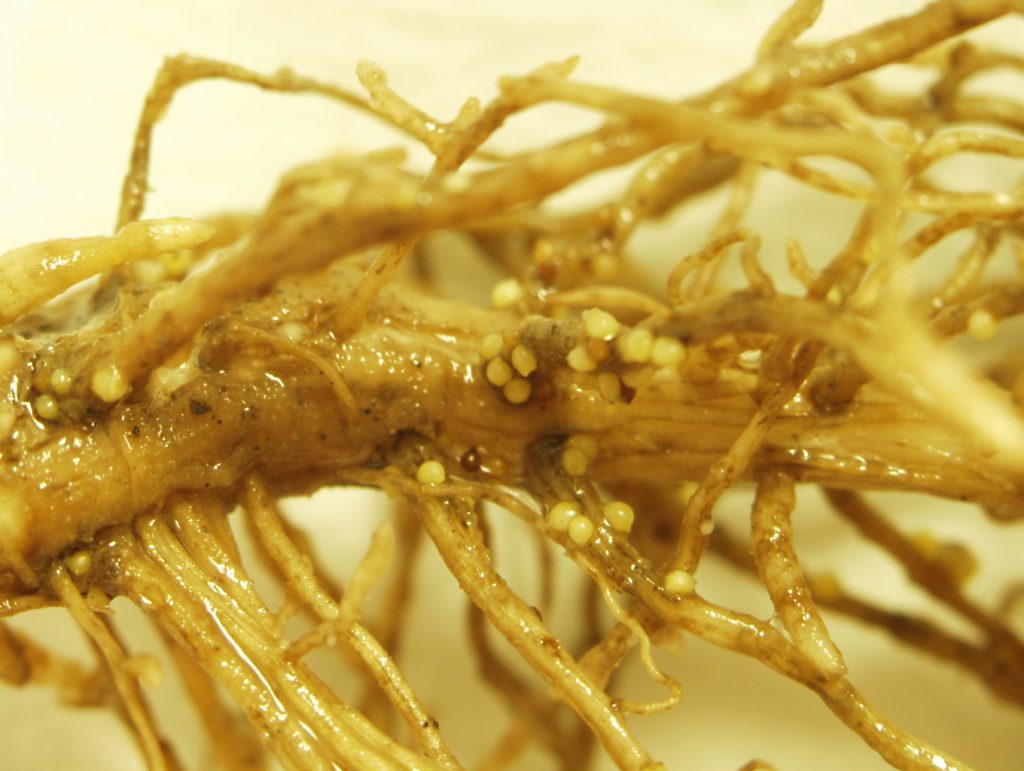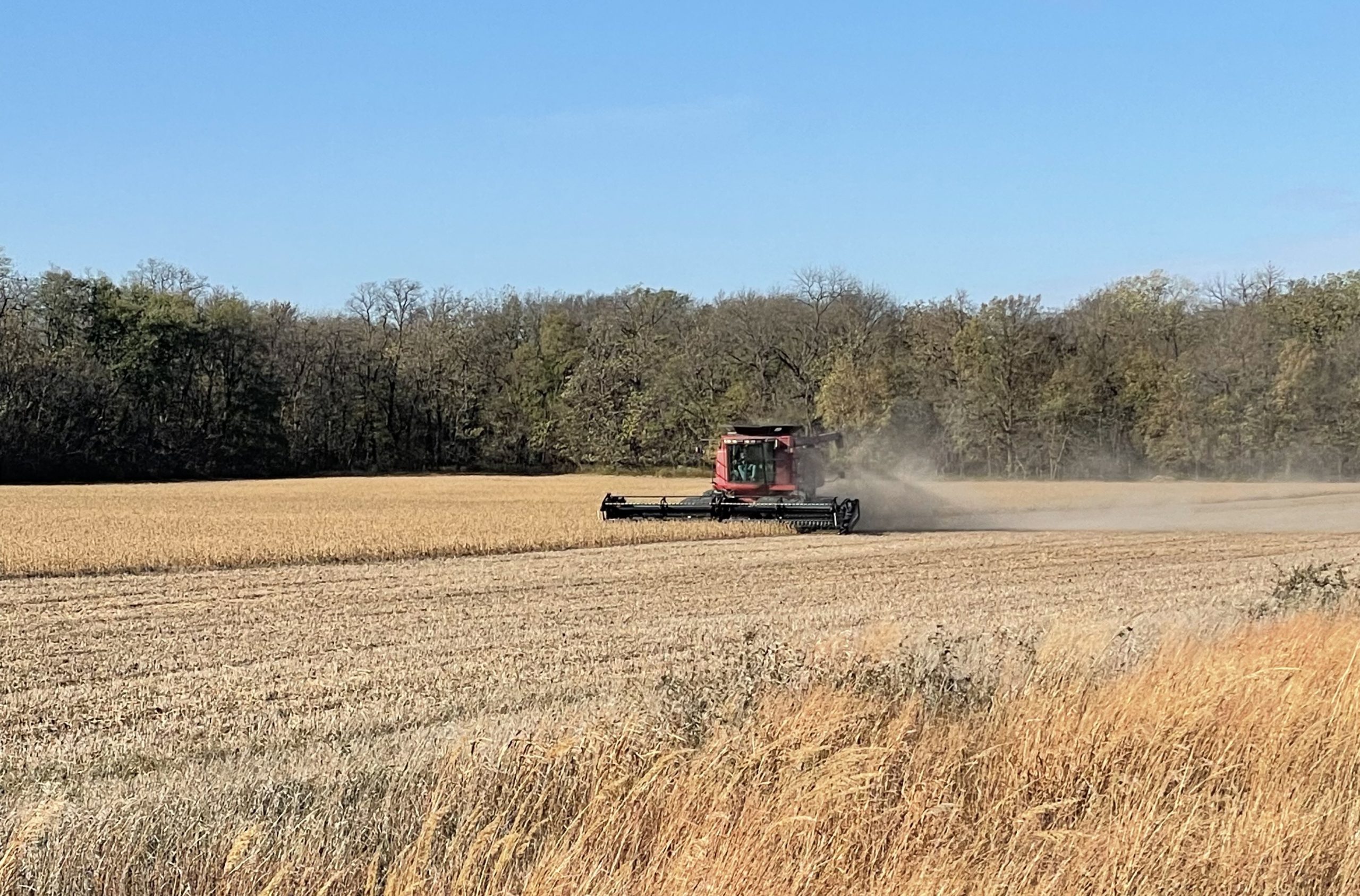Farmers often struggled during the drought of 2023 to identify what was happening in their soybean as plants showed similar symptoms with different causes.
University of Missouri Extension plant pathologist Mandy Bish calls some of these causes doppelgangers, look-alikes that mimic other diseases with confusing similarities and perplexing differences. In addition, old soybean foes and emerging threats combined to create challenges, she says.
Sudden death syndrome, as its name implies, strikes quickly as plants begin to flower. However, initial infection is in the roots. Symptoms include yellowing and browning of the leaves between leaf veins, followed by tissue death. Bluish fungal growth may appear on the roots. Roots show signs of rot, and severely infected leaves eventually fall off.
The fungus can survive in the soil and on soybean residue for several years. It favors cool and wet soils at planting time, so wait to plant when soil is warm. Aim to plant fields with SDS or SDS-like symptoms last. Plant an SDS-resistant variety into well-drained soil, and always rotate crops. Seed treatments can help to reduce early-season infections.
Red crown rot has symptoms that mimic sudden death syndrome. This disease has not been confirmed in Missouri, but losses up to 30 bushels per acre have been reported in western Illinois.
The fungus that causes red crown rot can survive winter and infect soybean roots shortly after planting. Symptoms include reddish discoloration in the root area near the soil line. Tiny, red ball-like structures called perithecia may grow on the crown and root. Wilting and death may not appear until late in the season. Leaves usually remain on the plant, unlike cases of sudden death syndrome. Co-infection can occur with plants having symptoms of both red crown rot and sudden death syndrome.
Later planting dates, rotation and avoiding poor drainage areas can help with managing the disease. Seed treatments may be helpful. Bish says that the disease can be spread through equipment.
Foliar injury due to fungicide applications was also observed in 2023. Symptoms on the leaves resembled SDS and red crown rot injury. This injury is typically due to triazole fungicides and more likely to occur in hot and dry conditions, such as those seen in 2023.
Charcoal rot favors dry, warm soils and is the disease to watch when drought conditions persist. Charcoal rot’s fungus grows inside the roots and stem. Symptoms most often occur late in the season but, as was the case in 2023, can appear early. The fungus disrupts water and nutrient uptake, which can result in yellowing leaves, wilting and premature leaf death. Early-season symptoms may be mistaken for Phytophthora or Pythium rots, but drought conditions favor charcoal rot. Tin black fungal structures called microsclerotia fall from mature plants at harvest and return to the soil, where they can infect future crops. Disease symptoms typically appear first in the driest regions of the field, such as edges, hillsides and areas with compacted soils. Bish received reports of charcoal rot the week of June 5, which is very early for Missouri. Most samples submitted to the MU Plant Diagnostic Clinic in June came from central and west0central Missouri, and many samples throughout the season tested positive for both charcoal rot and SDS.

Phytophthora root and stem rot was substantial in areas along U.S. Highway 36 and north in 2023. Phytophthora generally favors warm and wet condition, so its appearance during a droughty season initially seemed unusual, Bish says. But it appeared in irrigated fields where moisture created favorable conditions.
This disease can infect soybean at any stage and cause 100% yield losses. The fungus survives on crop residue and in the soil. The pathogen is becoming more complex, says Bish. The best management tool for this disease has been planting resistant varieties. However, the same soybean genetics have been in use since 1985, and the pathogen continues to adapt. The most commonly used resistance genes, Rps1c and Rps1k, are rapidly losing their resistance in the United States and some other countries. Other strategies to help with disease management include good drainage and seed treatments with active ingredients mefenoxam, metalaxyl and ethaboxam for early-season protection. To minimize spread, work suspect fields last and clean soil from equipment before moving to other fields or storage.
Soybean cyst nematode remains a top yield killer in Missouri, especially during drought. Since 1968, most growers have relied on varieties that contain P188788 or Peking resistances, with 95% of available seed containing P188788. Bish says Peking is an option, but not a “silver bullet,” when used in rotation, and seed is sometimes hard to find.
Test your soil to know your nematode numbers. Bish is director of the SCN Diagnostics clinic, will provide free SCN egg counts to farmers with support from Missouri Soybean Merchandising Council and farmers can contact the clinic by calling 573-884-9118 to learn more. Management of SCN includes rotation to non-host crops such as wheat or corn and rotation of SCN resistant varieties. For more information, see http://www.thescncoalition.com.



